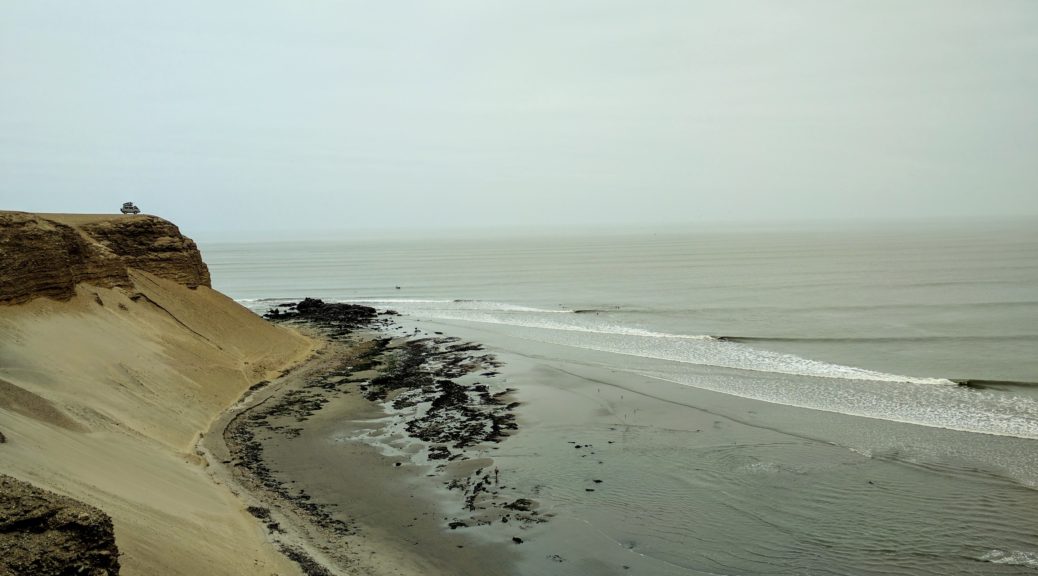
Peru: The Northern Coast
As we bid farewell to beloved Ecuador, we could only imagine what was in store ahead in the highly regarded country of Peru. 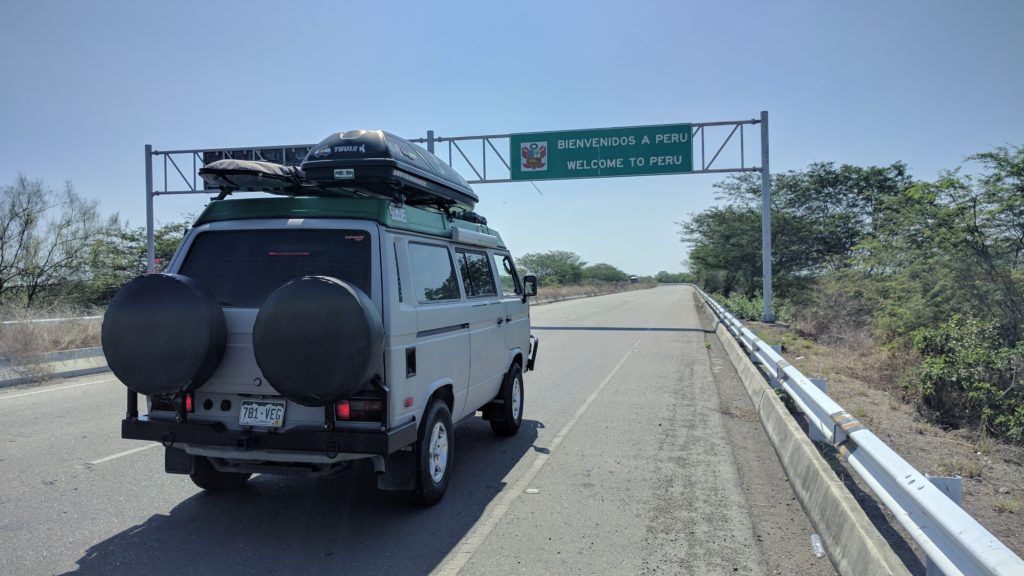 Our first stop led us to a campground run by a Swiss/Peruvian couple near the border that was popular among other overland travelers. We needed to do laundry, relax, and make plans for our adventures south, so we happily pulled into camp and met new (bigger) friends in the process.
Our first stop led us to a campground run by a Swiss/Peruvian couple near the border that was popular among other overland travelers. We needed to do laundry, relax, and make plans for our adventures south, so we happily pulled into camp and met new (bigger) friends in the process.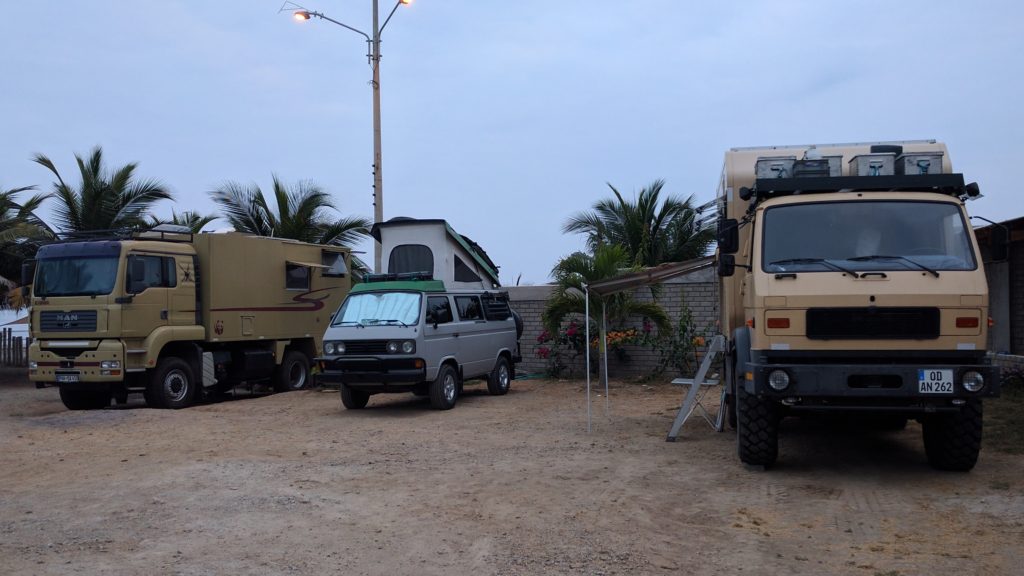 We enjoyed the company of the other travelers and the white sandy beach for a night while we organized for our descent down the coast.
We enjoyed the company of the other travelers and the white sandy beach for a night while we organized for our descent down the coast.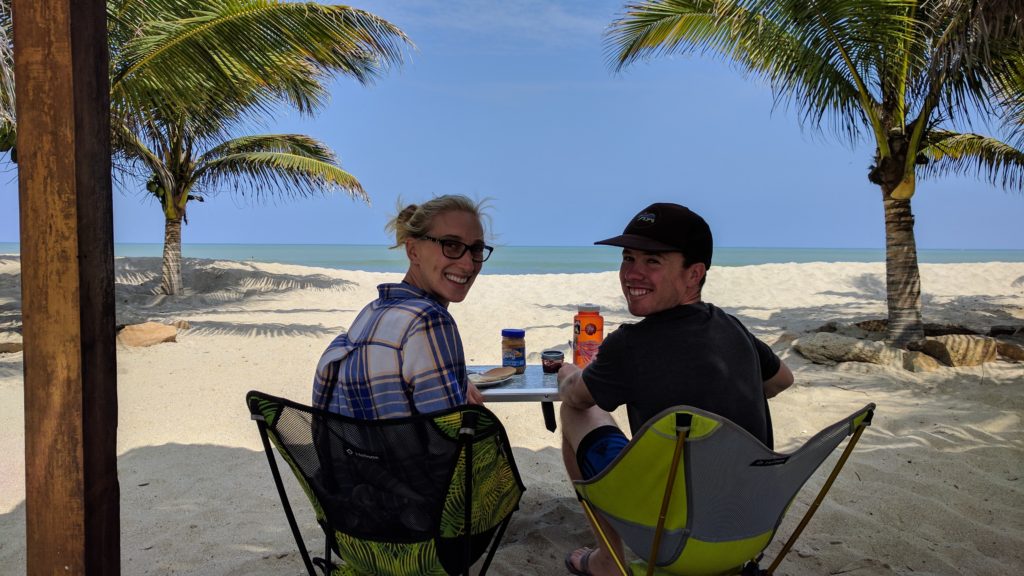 Not to forget, we were introduced to Peru’s national dog, the Peruvian Incan Orchid which surprised us at first, but turned out to be a sweet pup.
Not to forget, we were introduced to Peru’s national dog, the Peruvian Incan Orchid which surprised us at first, but turned out to be a sweet pup.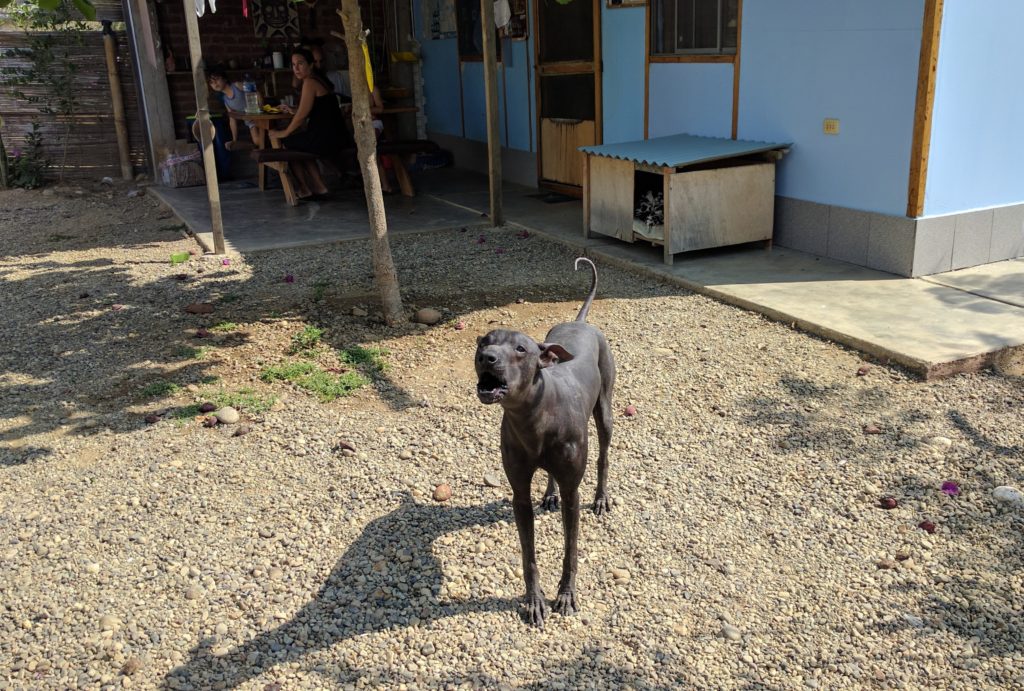 Peru’s coast is famous for the longest waves in the world and ancient pre-Incan cultures that were more advanced than we can imagine, especially considering the harsh conditions of the desert coast which we were about to discover. After crossing the border, we immediately felt the drier air and witnessed the landscape change to more desert-like conditions immediately.
Peru’s coast is famous for the longest waves in the world and ancient pre-Incan cultures that were more advanced than we can imagine, especially considering the harsh conditions of the desert coast which we were about to discover. After crossing the border, we immediately felt the drier air and witnessed the landscape change to more desert-like conditions immediately.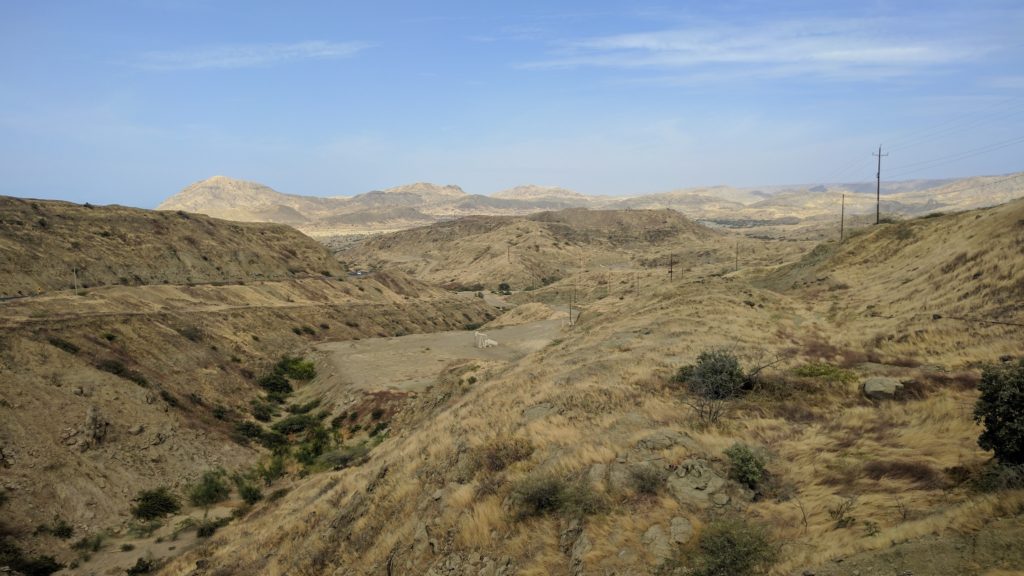 After a restful evening, we headed south to our first surf spot in the tourist hub of Mancora. We needed to buy wet-suits due to the frigid waters the Humboldt current brings from the arctic to the north along the pacific coast of South America. The excitement for waves didn’t keep us out of the water for long.
After a restful evening, we headed south to our first surf spot in the tourist hub of Mancora. We needed to buy wet-suits due to the frigid waters the Humboldt current brings from the arctic to the north along the pacific coast of South America. The excitement for waves didn’t keep us out of the water for long. While shopping around, we asked for a good place to try Peru’s famous ceviche (raw fish in a lime sauce), and with a good recommendation we struck gold. Our passion for ceviche was sparked instantly and we looked forward to more samplings as we traveled along the coast.
While shopping around, we asked for a good place to try Peru’s famous ceviche (raw fish in a lime sauce), and with a good recommendation we struck gold. Our passion for ceviche was sparked instantly and we looked forward to more samplings as we traveled along the coast.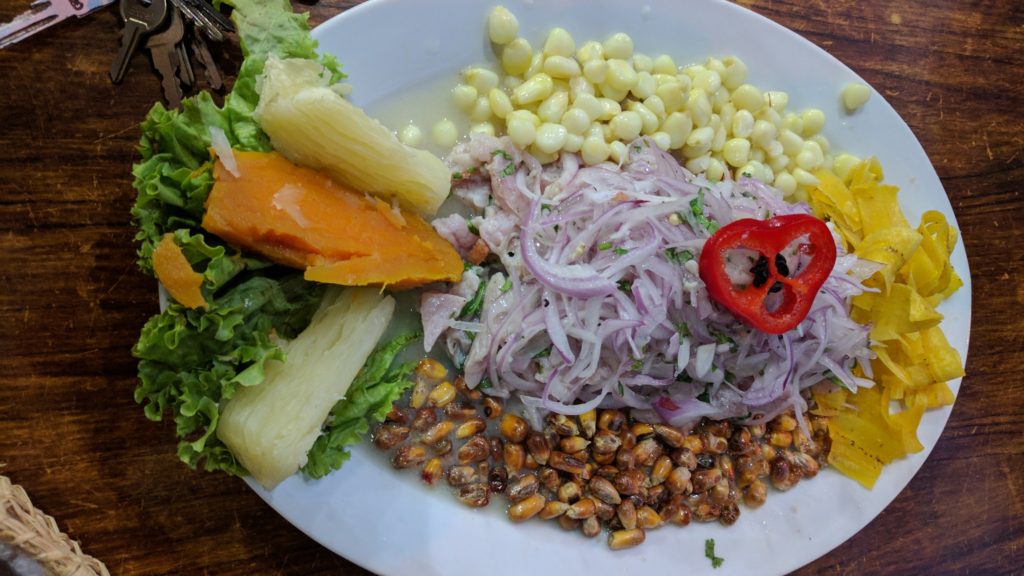 After finding wet-suits to keep us comfortable in the frigid waters, and a nice night next to the ocean, we sought a quieter town further down the road. Stumbling upon Los Organos was just the ticket, with great waves and wildlife like sea lions and countless birds.
After finding wet-suits to keep us comfortable in the frigid waters, and a nice night next to the ocean, we sought a quieter town further down the road. Stumbling upon Los Organos was just the ticket, with great waves and wildlife like sea lions and countless birds.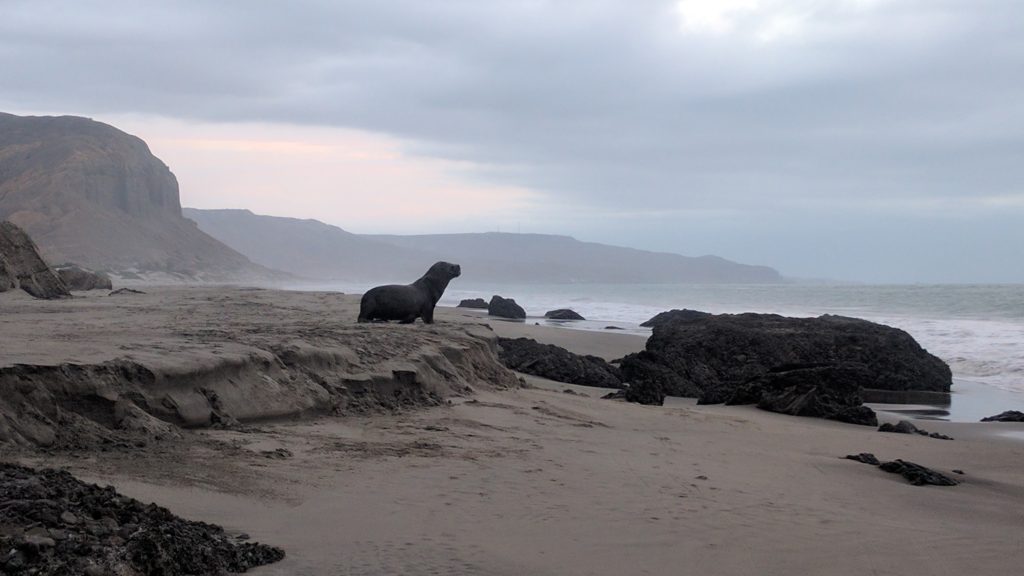
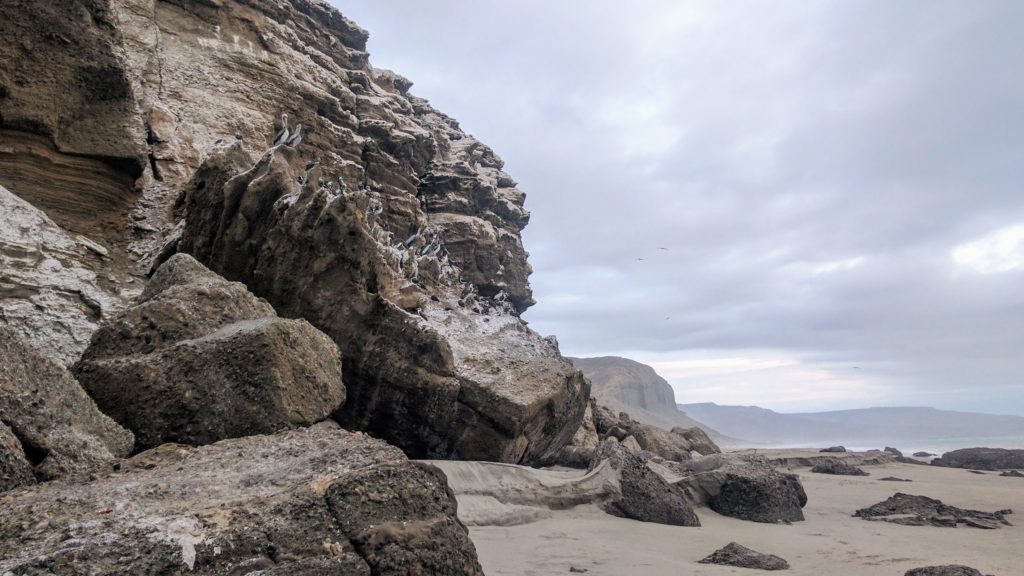 We’d heard many bad rumors about the safety in Peru, especially along the coast and did find ourselves a little nervous as we went, but Los Organos proved to be gem in the rough as we parked the van right in front of the waves with no worries. Beautiful sunsets and rides were had here making it yet another place that was difficult to leave.
We’d heard many bad rumors about the safety in Peru, especially along the coast and did find ourselves a little nervous as we went, but Los Organos proved to be gem in the rough as we parked the van right in front of the waves with no worries. Beautiful sunsets and rides were had here making it yet another place that was difficult to leave.
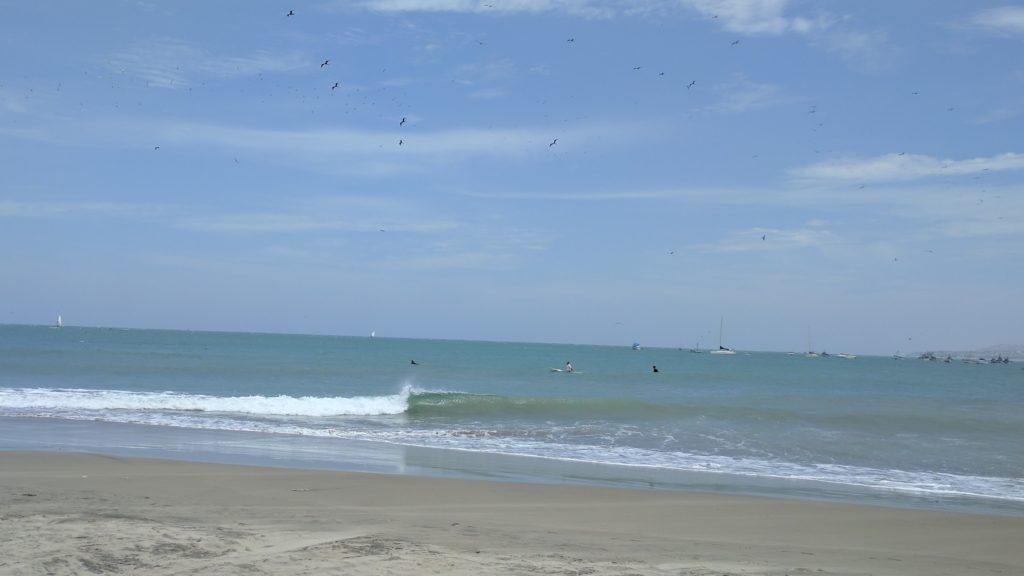
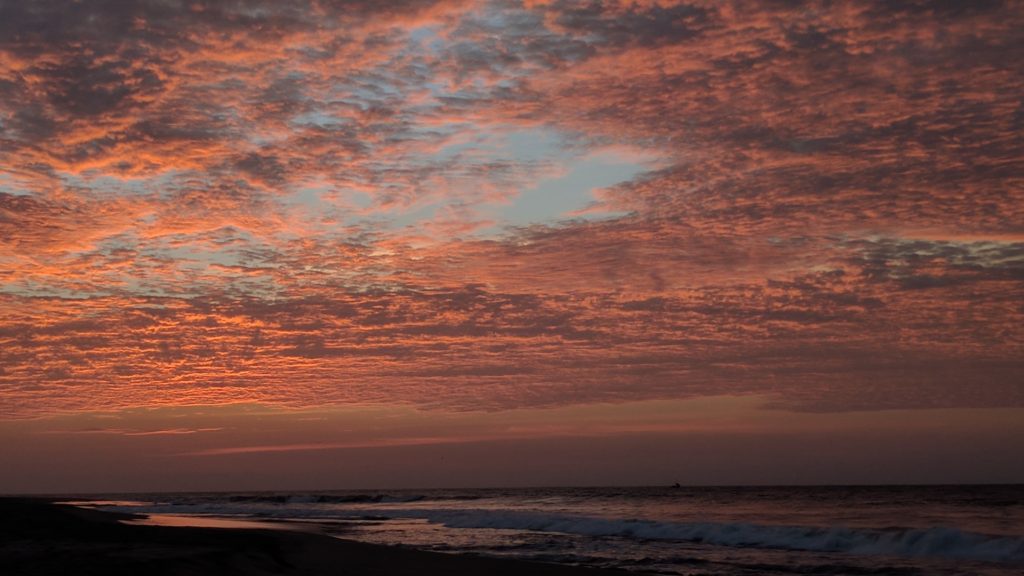 The famous barreling wave of Los Lobitos (sea lion in English) was next on our stop down the coast where we camped at a friendly hostel and coincidentally met other travelers from Colorado. Although a large swell was not present to create the conditions it is known for, we had great waves that were enjoyed by all.
The famous barreling wave of Los Lobitos (sea lion in English) was next on our stop down the coast where we camped at a friendly hostel and coincidentally met other travelers from Colorado. Although a large swell was not present to create the conditions it is known for, we had great waves that were enjoyed by all.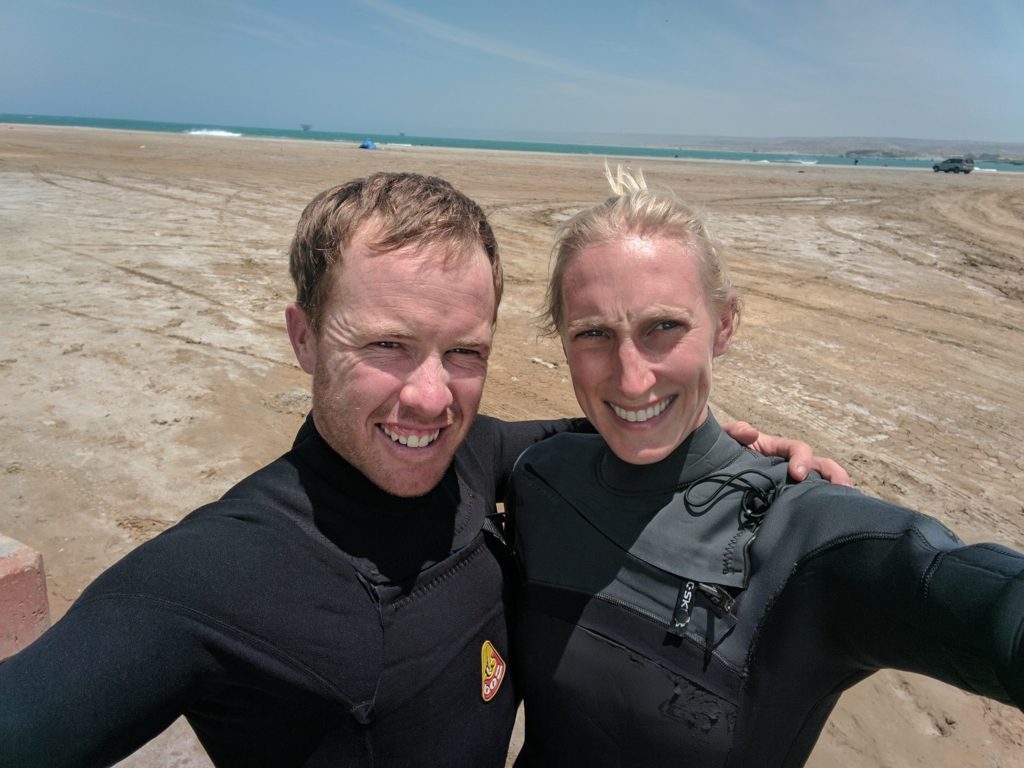
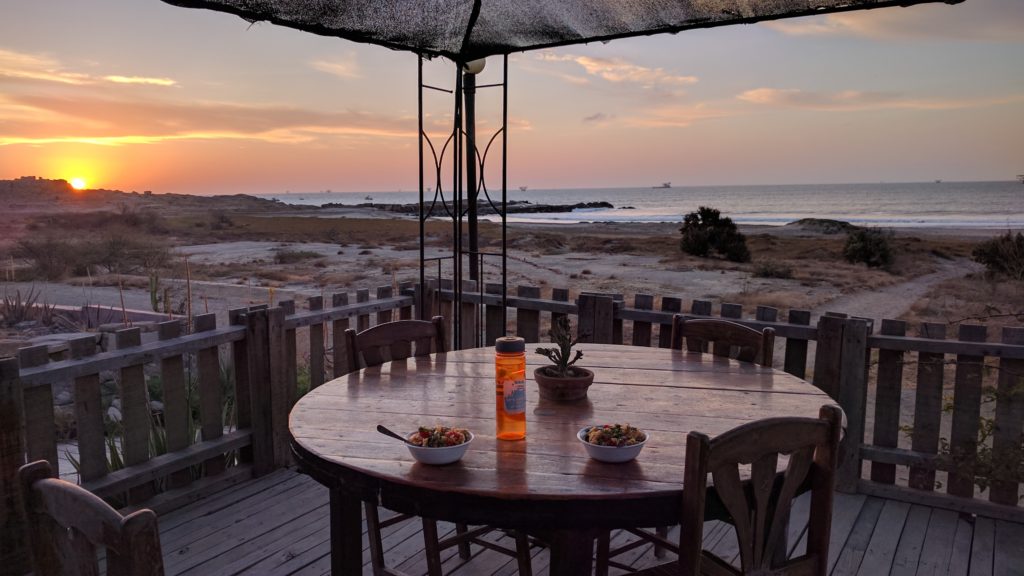 The waves in this part of the world are known for being so long that it’s common to get out of the water after a ride and walk back up the beach to regain access to the takeoff point. We were lucky enough to catch long enough waves in Lobitos to experience this.
The waves in this part of the world are known for being so long that it’s common to get out of the water after a ride and walk back up the beach to regain access to the takeoff point. We were lucky enough to catch long enough waves in Lobitos to experience this.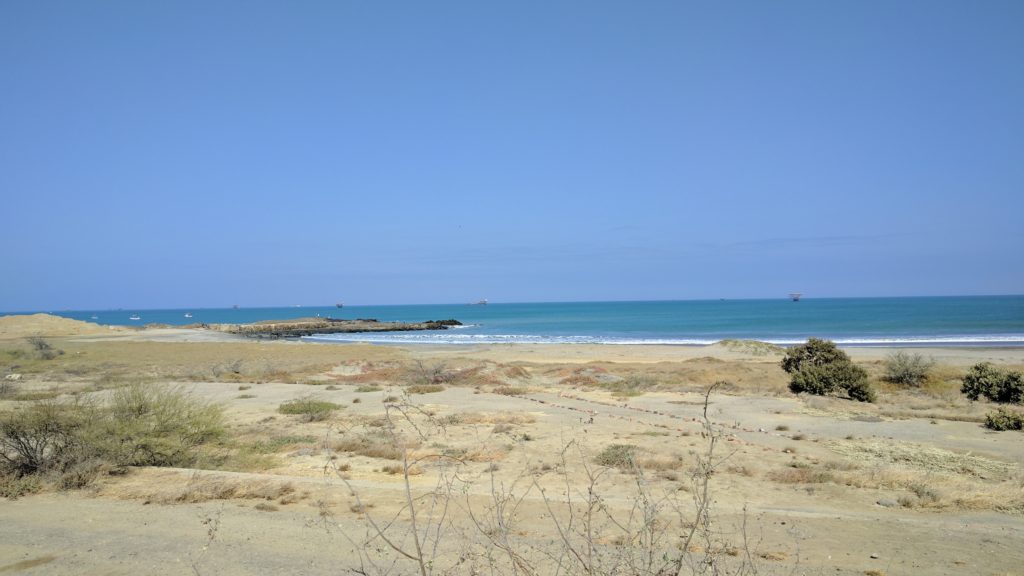 Northern Peru was quite different from our other beach experiences on the trip. The further down the coast we drove, the drier the desert became. Lobitos was no different with sand dunes all around. It is a wonder how any plants can survive with the heat, wind, and lack of rain.
Northern Peru was quite different from our other beach experiences on the trip. The further down the coast we drove, the drier the desert became. Lobitos was no different with sand dunes all around. It is a wonder how any plants can survive with the heat, wind, and lack of rain.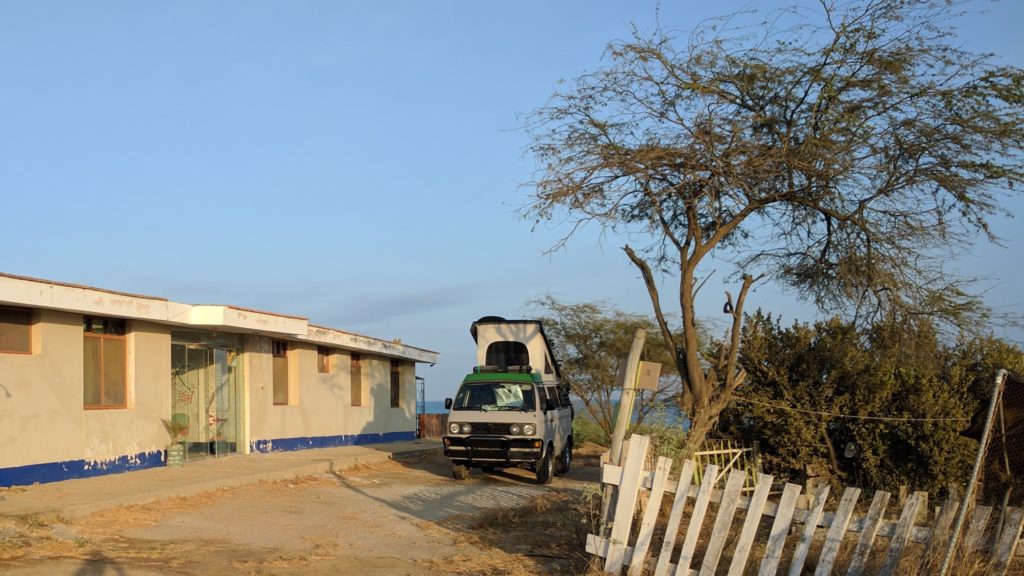 After Lobitos, we took a side adventure to the furthest western point of the continent. The wind was howling as we made our way through the sand towards Punta Balcones.
After Lobitos, we took a side adventure to the furthest western point of the continent. The wind was howling as we made our way through the sand towards Punta Balcones. 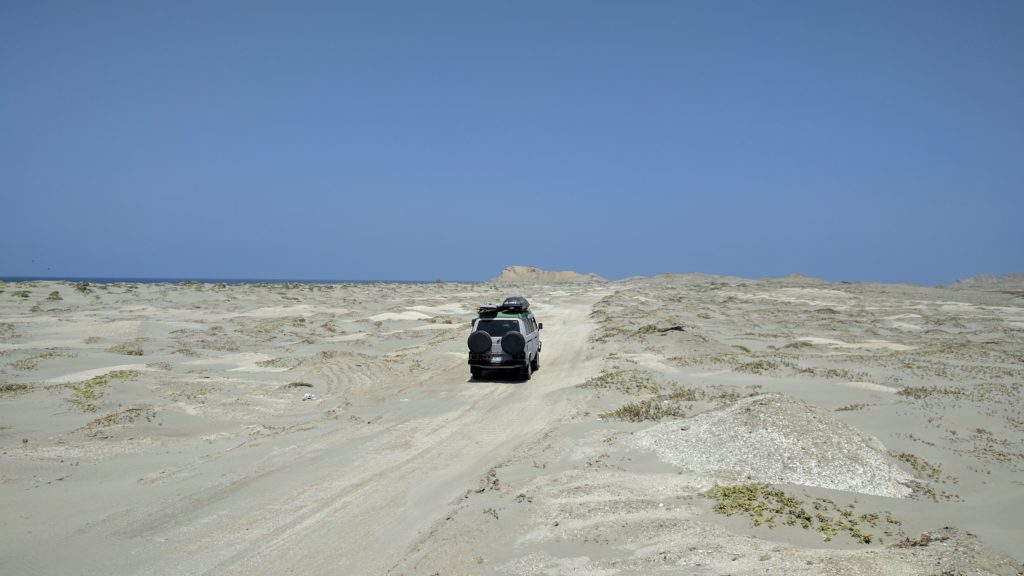 Climbing to the top of the rock to take peak at China, we watched sea lions sun bathe, pelicans hunt and the numerous oil rigs in the distance.
Climbing to the top of the rock to take peak at China, we watched sea lions sun bathe, pelicans hunt and the numerous oil rigs in the distance. 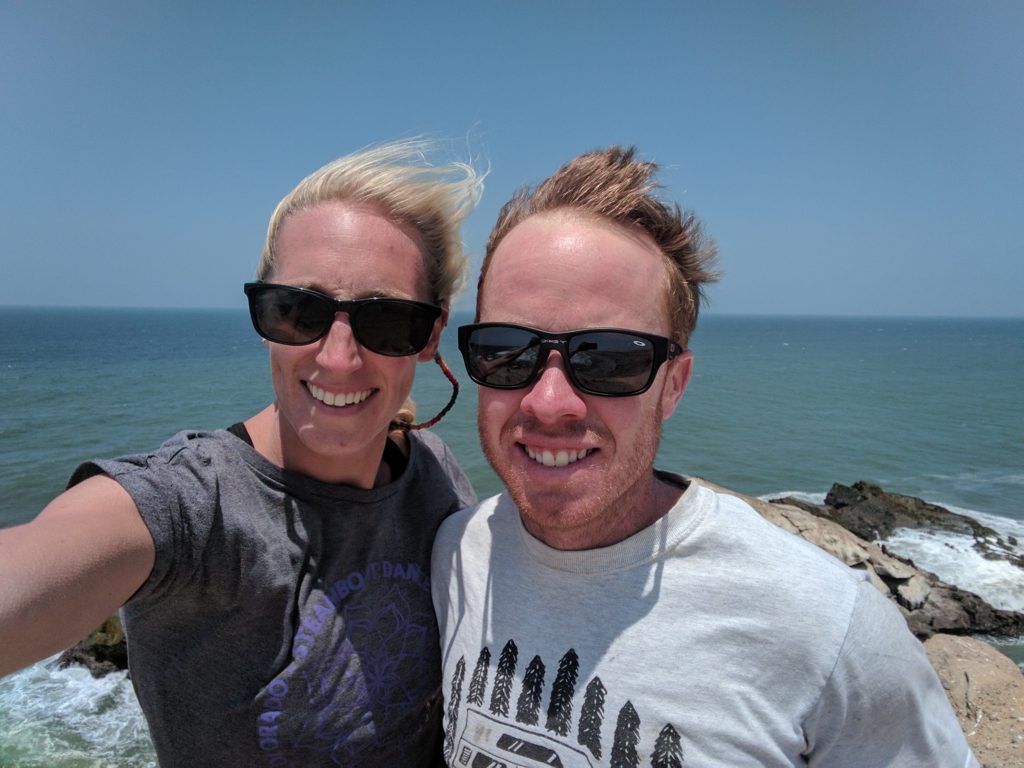
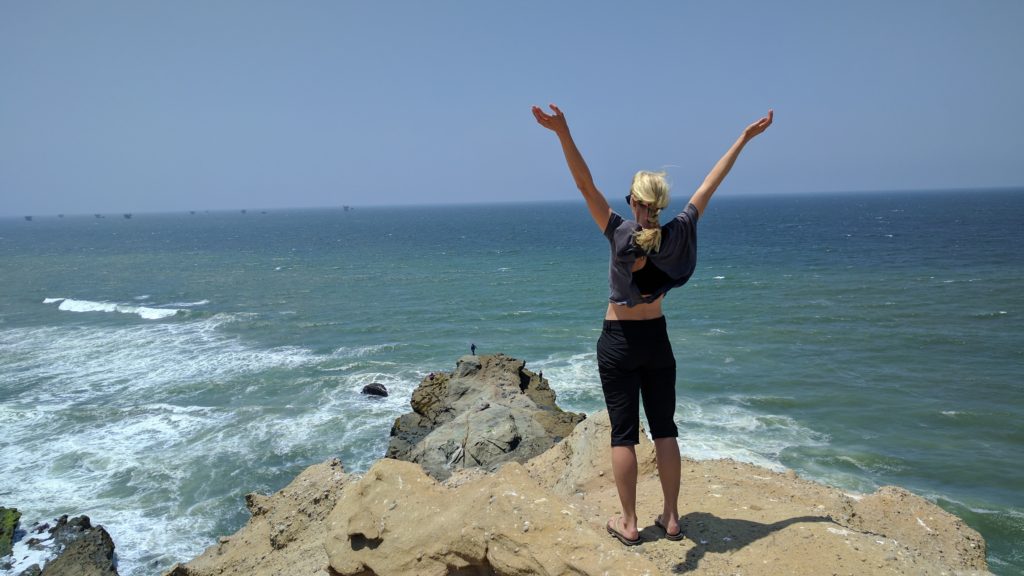 After the quick visit to the most western point, we continued south towards an area known for several pre-colombian societies. On the way, we experienced the worst garbage yet on our trip. In northern Peru there is no regard for proper trash disposal unfortunately, and driving around the city of Talara was particularly bad. This trash went on for miles and miles. It was hard to see and we only hope that our efforts to recycle and reuse will help just a little with the global trash problem.
After the quick visit to the most western point, we continued south towards an area known for several pre-colombian societies. On the way, we experienced the worst garbage yet on our trip. In northern Peru there is no regard for proper trash disposal unfortunately, and driving around the city of Talara was particularly bad. This trash went on for miles and miles. It was hard to see and we only hope that our efforts to recycle and reuse will help just a little with the global trash problem.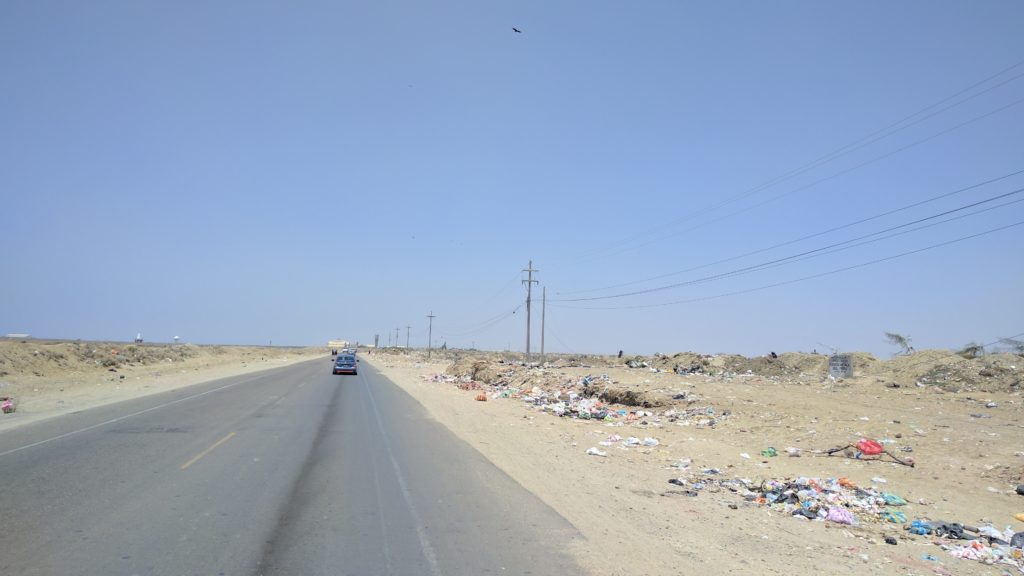 The following day we visited the museum of El Sipan, one of the most famous and complete collections of pre-Incan artifacts in Peru and the world.
The following day we visited the museum of El Sipan, one of the most famous and complete collections of pre-Incan artifacts in Peru and the world.  We viewed incredible gold and precious metal artifacts used in tombs of ancient royalty, however no photos were allowed from inside. Many of Peru’s treasures have been looted over the years with the items sold on the black market all over the world, but fortunately in this museum many artifacts are displayed that have been returned to Peru through international efforts.
We viewed incredible gold and precious metal artifacts used in tombs of ancient royalty, however no photos were allowed from inside. Many of Peru’s treasures have been looted over the years with the items sold on the black market all over the world, but fortunately in this museum many artifacts are displayed that have been returned to Peru through international efforts. Continuing down the coast, Chicama was next on the list, known to have the longest wave in the world!
Continuing down the coast, Chicama was next on the list, known to have the longest wave in the world!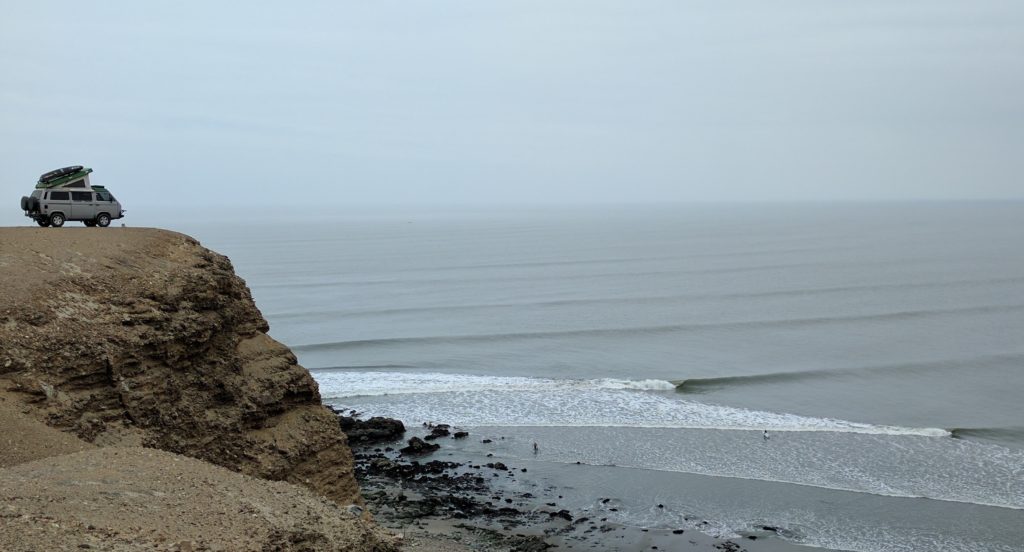 Again there was no swell creating the famous conditions, but nonetheless there were waves and very few people. We even had a few hours at the best point break where it was just the two of us with our choice of any wave we wanted; romantic and special to say the least.
Again there was no swell creating the famous conditions, but nonetheless there were waves and very few people. We even had a few hours at the best point break where it was just the two of us with our choice of any wave we wanted; romantic and special to say the least. 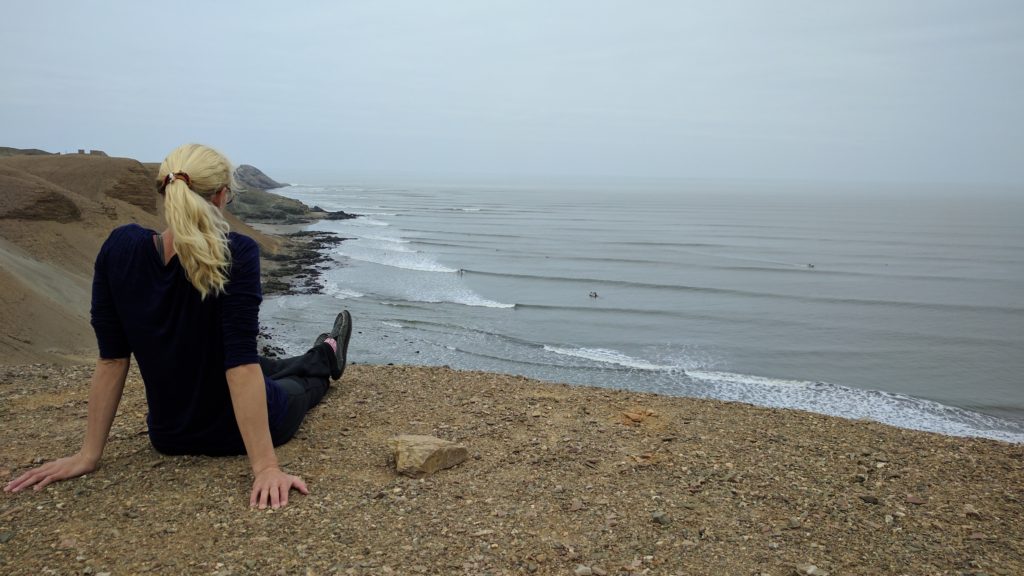 We had the luck to meet a very friendly Venezuelan couple working at a hotel that allowed us to park and use the facilities while we explored the area. Due to Venezuela’s current political issues, we continue to meet their people looking for opportunities elsewhere in South America. Every Venezuelan we’ve had the pleasure of meeting is so sweet and kind that it’s created a passion to visit their wonderful country someday.
We had the luck to meet a very friendly Venezuelan couple working at a hotel that allowed us to park and use the facilities while we explored the area. Due to Venezuela’s current political issues, we continue to meet their people looking for opportunities elsewhere in South America. Every Venezuelan we’ve had the pleasure of meeting is so sweet and kind that it’s created a passion to visit their wonderful country someday. 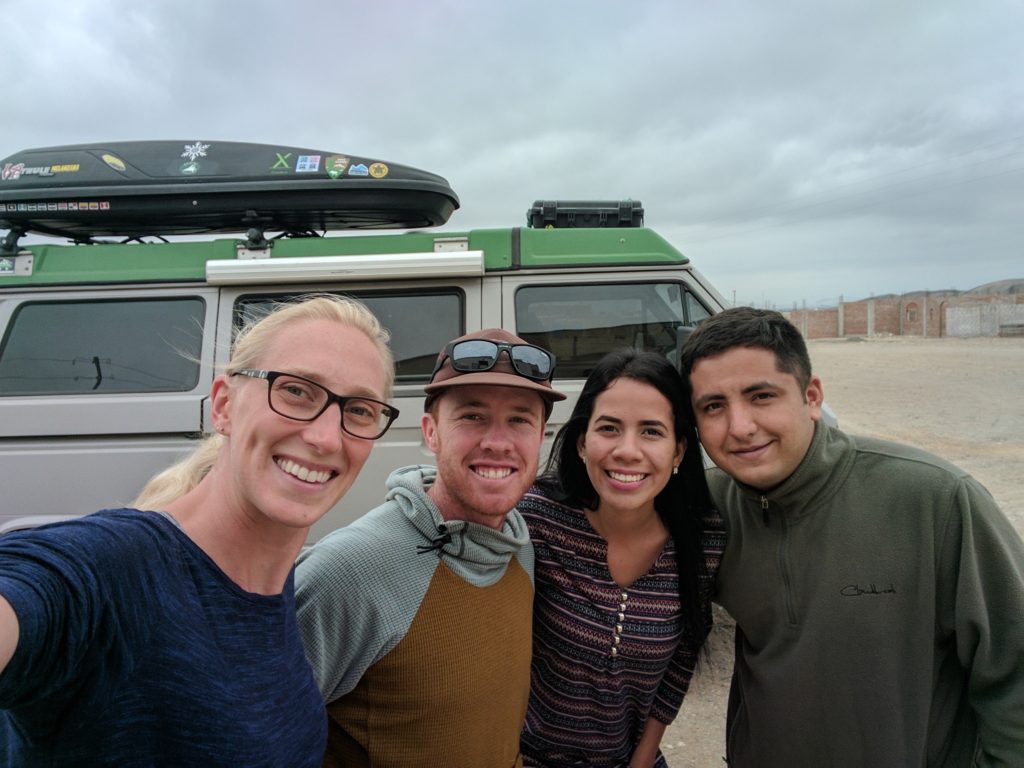 It is worth noting that the northern coast of Peru is one of the hardest hit locations in the world during el nino years. The cold waters from the Humboldt current mix with the warm waters from the north and produces rain storms unimaginable to those who don’t live here. The 2016 event hit the coast hard and we witnessed the damage to the roads and many of the ocean front communities that were still very much under re-construction.
It is worth noting that the northern coast of Peru is one of the hardest hit locations in the world during el nino years. The cold waters from the Humboldt current mix with the warm waters from the north and produces rain storms unimaginable to those who don’t live here. The 2016 event hit the coast hard and we witnessed the damage to the roads and many of the ocean front communities that were still very much under re-construction.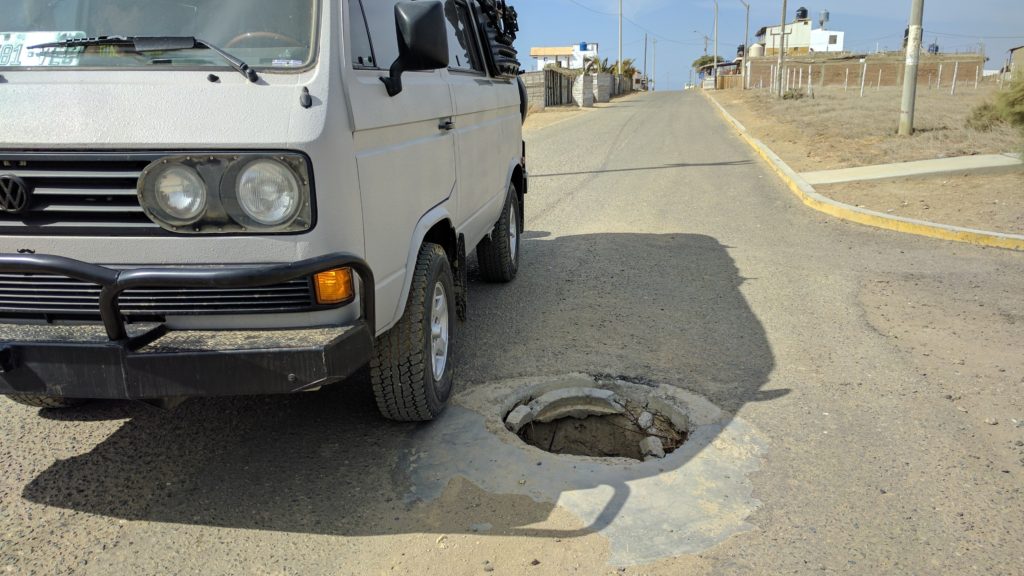 Before our next surf break, we ventured towards the mud ruins of Chan-Chan outside of Trujillo where we could observe the artistic and creative nature of the Moche people.
Before our next surf break, we ventured towards the mud ruins of Chan-Chan outside of Trujillo where we could observe the artistic and creative nature of the Moche people.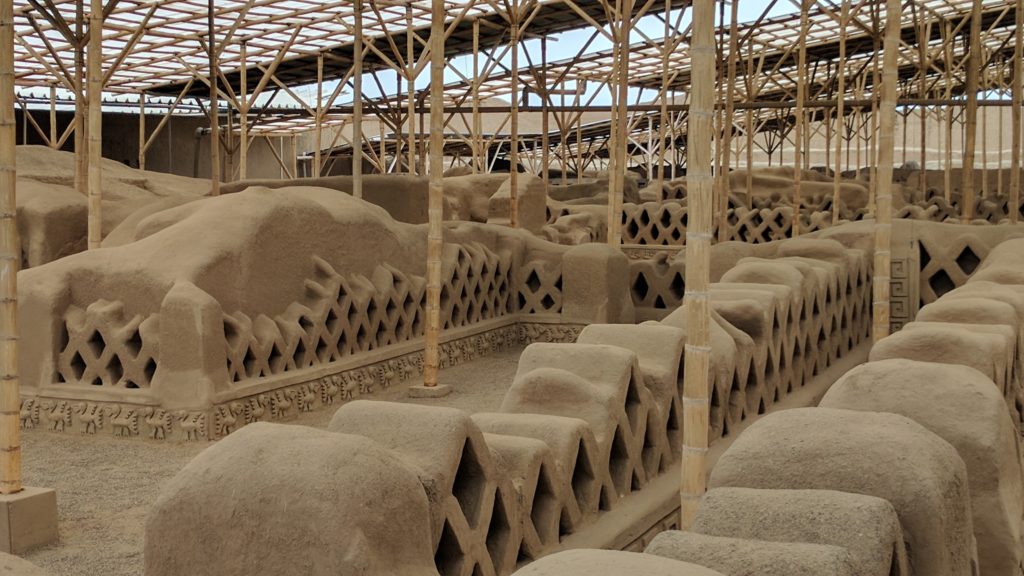 Without using doors or stairs, they managed to create a city that reminds one of a maze that is difficult to navigate but secure from potential intruders and partitioned in a way to maintain privacy for all inhabitants.
Without using doors or stairs, they managed to create a city that reminds one of a maze that is difficult to navigate but secure from potential intruders and partitioned in a way to maintain privacy for all inhabitants.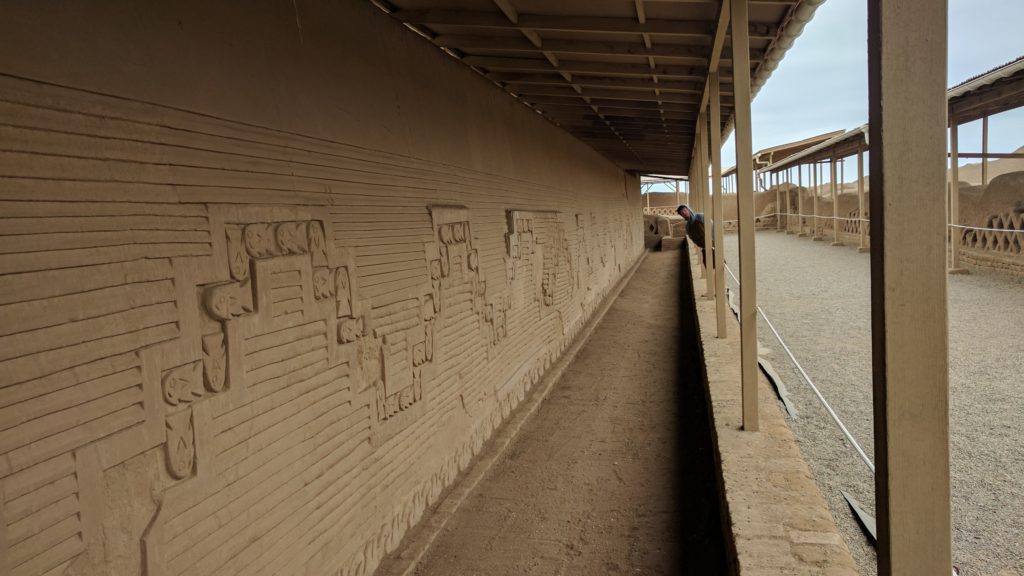
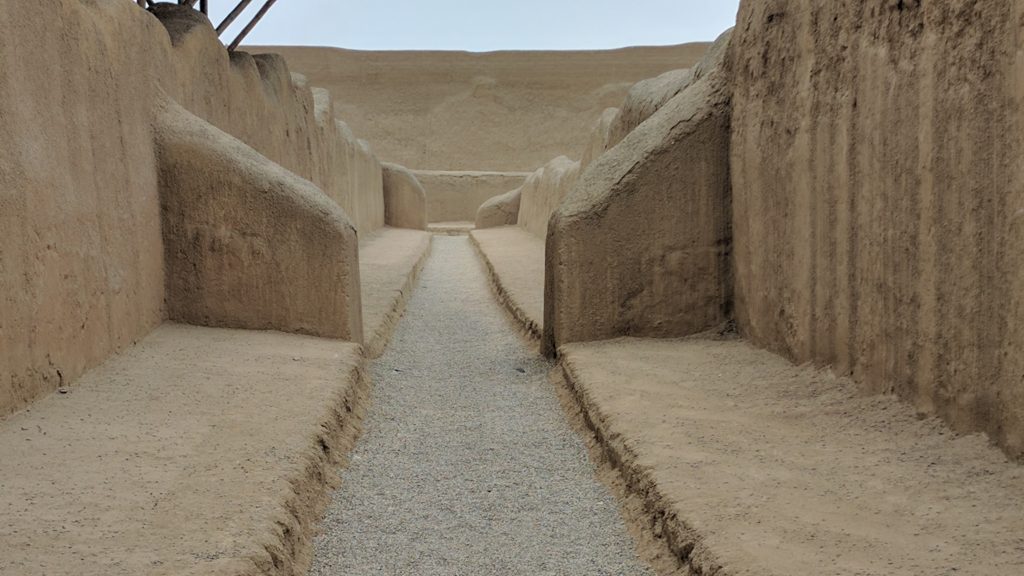 These coastal ruins of the Moche inhabitants of Peru are credited with the technology of modern aqueducts, whose concepts and techniques are still used to this day all over the country and world. Without understanding this, one would view these ruins completely puzzled because the region is completely dry and surrounded in nothing but sand.
These coastal ruins of the Moche inhabitants of Peru are credited with the technology of modern aqueducts, whose concepts and techniques are still used to this day all over the country and world. Without understanding this, one would view these ruins completely puzzled because the region is completely dry and surrounded in nothing but sand.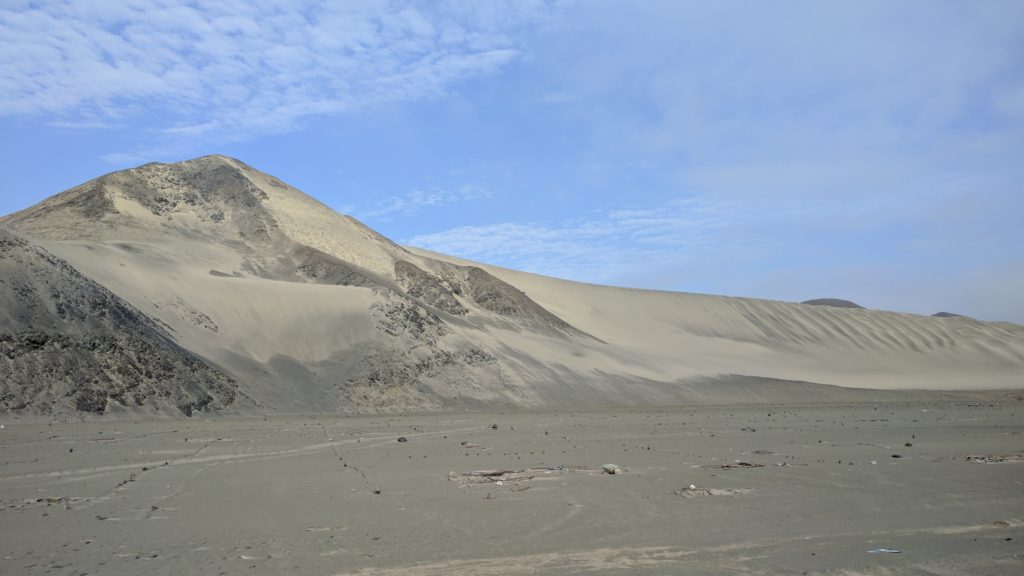 The ingenuity of the ancient cultures surpassed these rough conditions and provided water for thousands of inhabitants for thousands of years. Simply incredible.
The ingenuity of the ancient cultures surpassed these rough conditions and provided water for thousands of inhabitants for thousands of years. Simply incredible.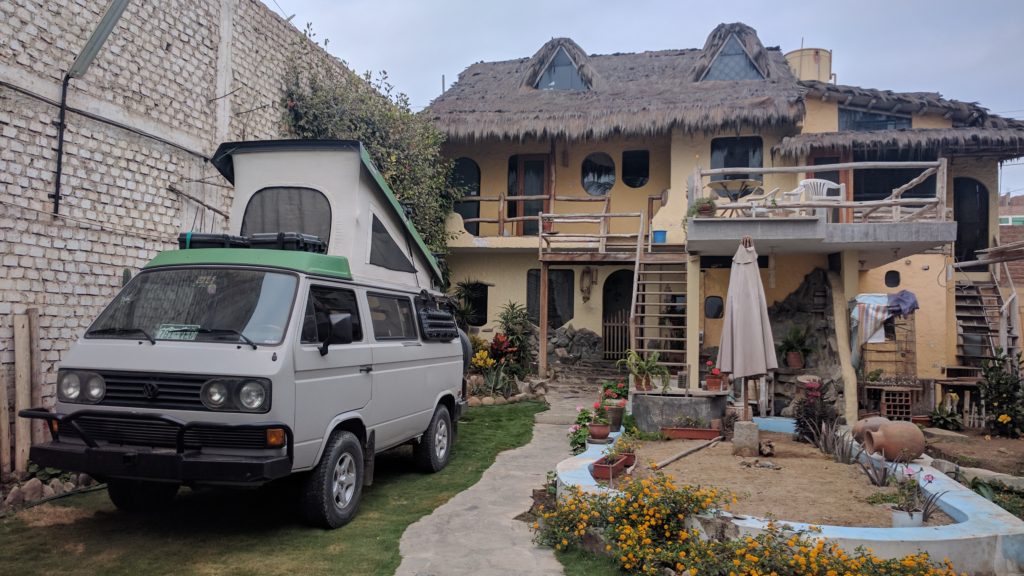 Huanchaco was our next stop, near the fascinating Chan Chan ruins. We landed at a very quaint little spot with just enough room for Koru.
Huanchaco was our next stop, near the fascinating Chan Chan ruins. We landed at a very quaint little spot with just enough room for Koru.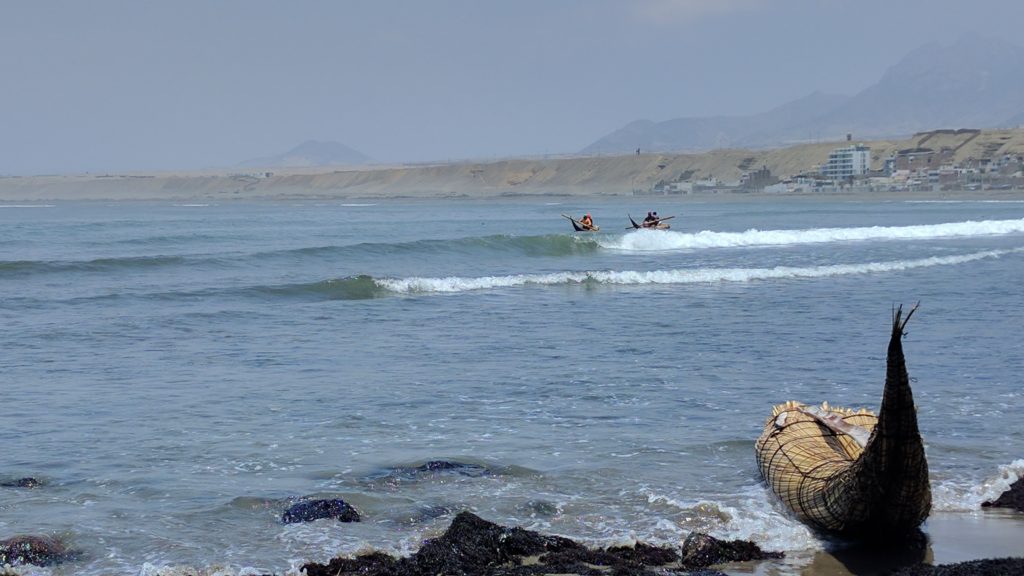 Many people consider Huanchaco as the birthplace of surfing or wave-riding (whereas Hawaii is credited with the birthplace of ‘modern’ stand-up surfing).
Many people consider Huanchaco as the birthplace of surfing or wave-riding (whereas Hawaii is credited with the birthplace of ‘modern’ stand-up surfing).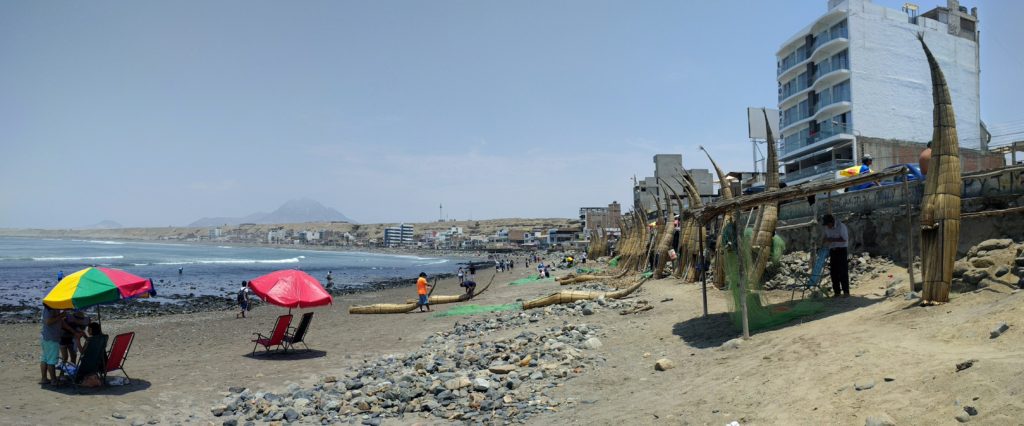 Fisherman travel into the ocean with their homemade vessels on their knees and paddle to make their catch for the day. Once they’ve made their catch, they strategically ride the long curling point-break waves all the way back to shore to make their lives easier and to have a little fun too. To this day, many fisherman still use these techniques.
Fisherman travel into the ocean with their homemade vessels on their knees and paddle to make their catch for the day. Once they’ve made their catch, they strategically ride the long curling point-break waves all the way back to shore to make their lives easier and to have a little fun too. To this day, many fisherman still use these techniques.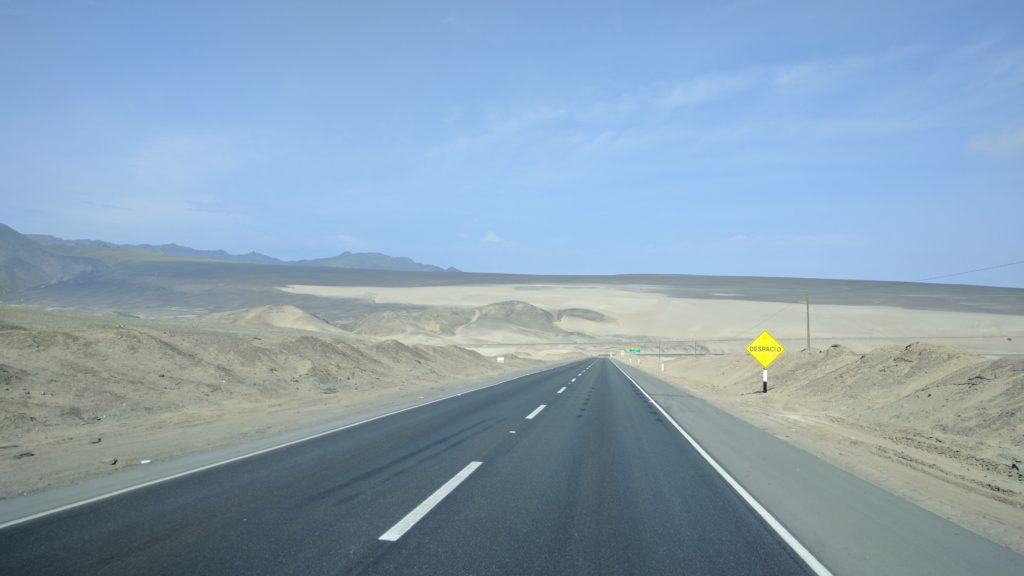 After some wonderful times along the northern coast exploring the surf and cultural ruins, we aimed for the capitol city of Lima. Sarah’s family was arriving in a few days and we were excited to spend time together, sample Lima’s famous food, and learn more about Peruvian culture. Did we mention our driving skills were put to the extreme test in Peru?
After some wonderful times along the northern coast exploring the surf and cultural ruins, we aimed for the capitol city of Lima. Sarah’s family was arriving in a few days and we were excited to spend time together, sample Lima’s famous food, and learn more about Peruvian culture. Did we mention our driving skills were put to the extreme test in Peru?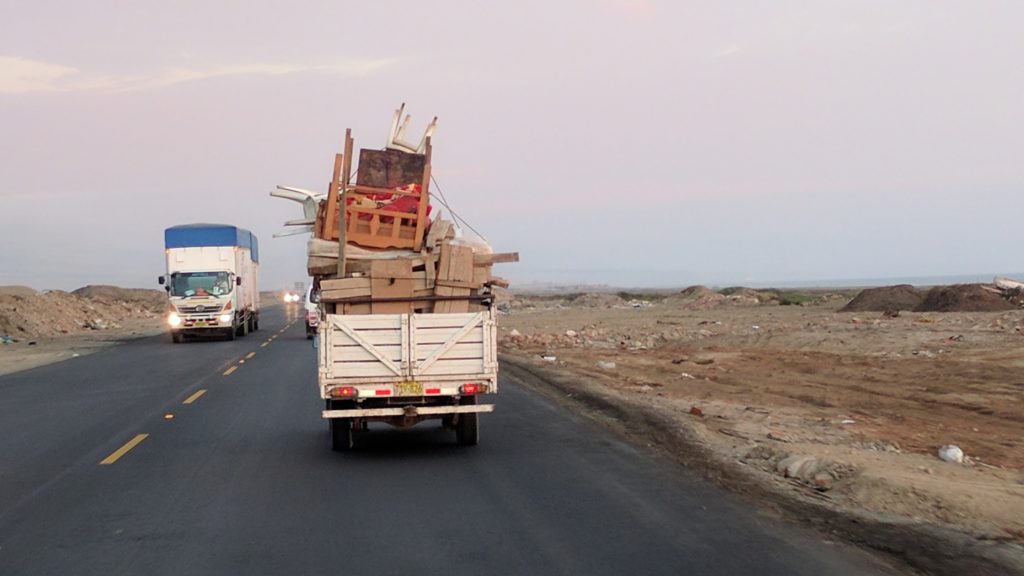
9 thoughts on “Peru: The Northern Coast”
Hi Sarita and Matt:
I must say that Peru is an amazing place to visit. Very different country, because of culture..food..and music ?.
Very interesting pictures about Peruvian coast..i knew is is a desert ?..no trees or coconut trees there, and now after reading your website I have more knowledge about this.
Thanks for uploading pictures about food..Peruvian ceviche is totally different from Ecuadorian ceviche..i just wonder if you eat lama?..llama..papa ? huancaína?
I am very curious about how many kilometers have you been driving since the adventure started?
Please keep safe and drive..despacito.
Paulina
Seeing those endless point break waves made me long for the beach and a board. Beautiful, long waves in a very interesting country. You guys are seeing the best of it on your incredible journey. The ancient communities that have thrived and survived in the desert because of the aquaduct system is fascinating and a testament to the great adaptability of humans to their environment. Thanks for sharing.
I enjoy traveling with you and the photos are wonderful but I’ll be happy when you’re making them back in the states. Be safe! Miss you and love you!
I enjoy traveling with you and the photos are wonderful. Your photos are wonderful. Be safe! Love you
I enjoy traveling with you and the photos are wonderful. Be safe! Love you
Fascinating! Thanks for the history lesson! Your condo in Steamboat Still looks great as we pass by everyday!
Thanks for keeping your eyes on our place Gail 🙂 we’re looking forward to sharing stories in person once we’re back in Steamboat sometime this summer.
We never got to the coast of Peru, so I very much enjoyed your pictures and commentary! Looked like the surfing was so fabulous! Gail Eden
Thanks Gail, the surfing is something special in Peru and the coast is a fascinating place.